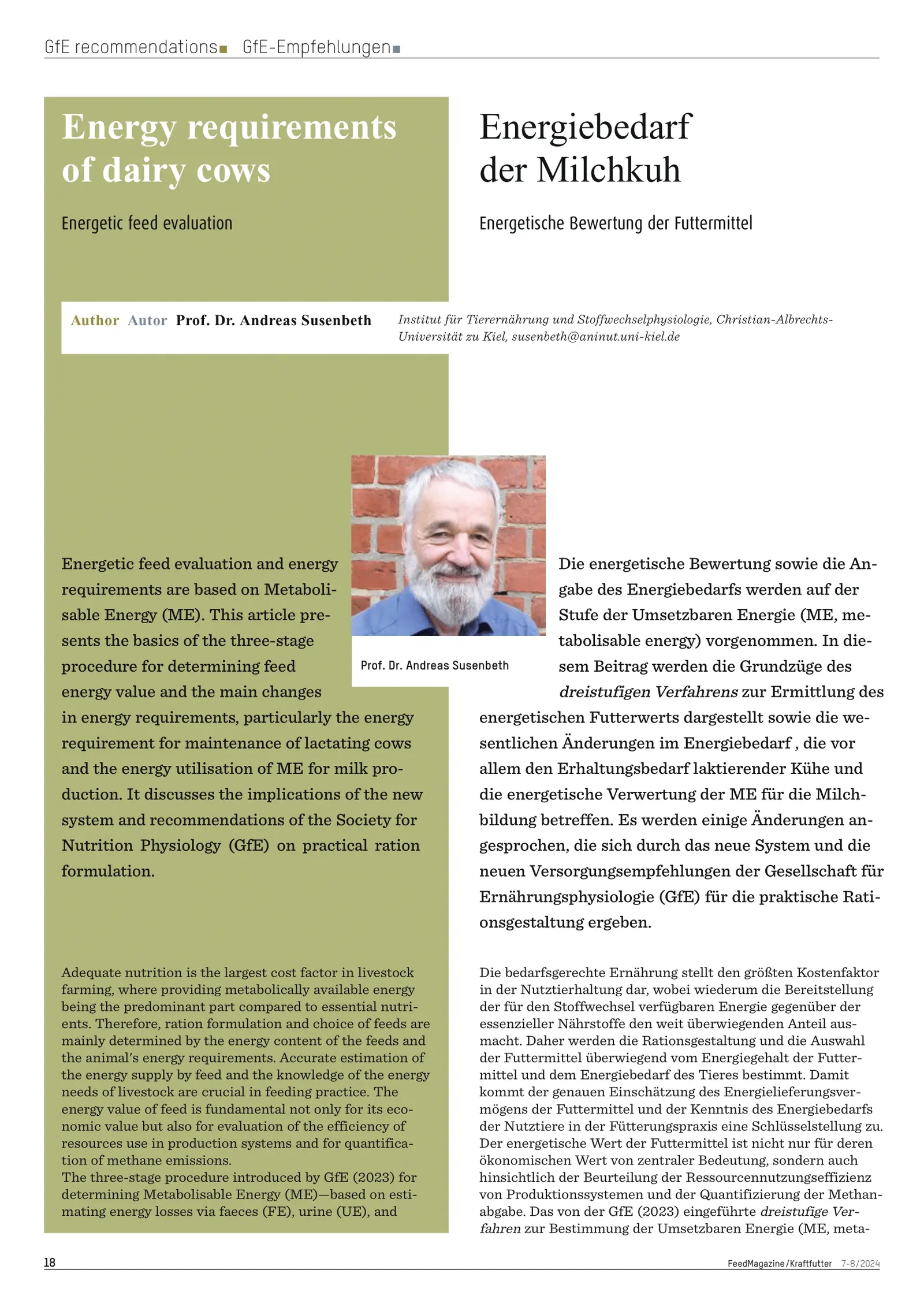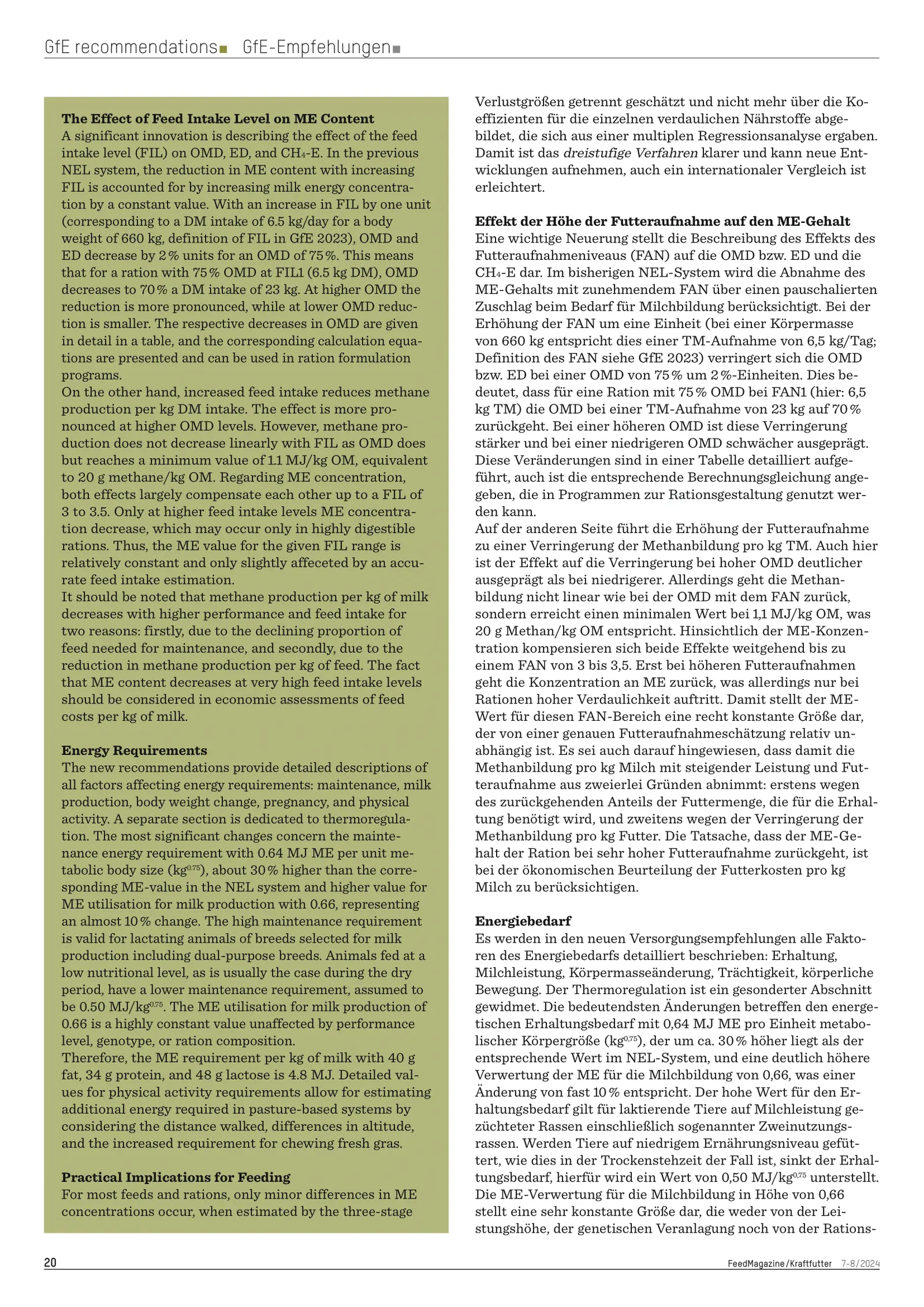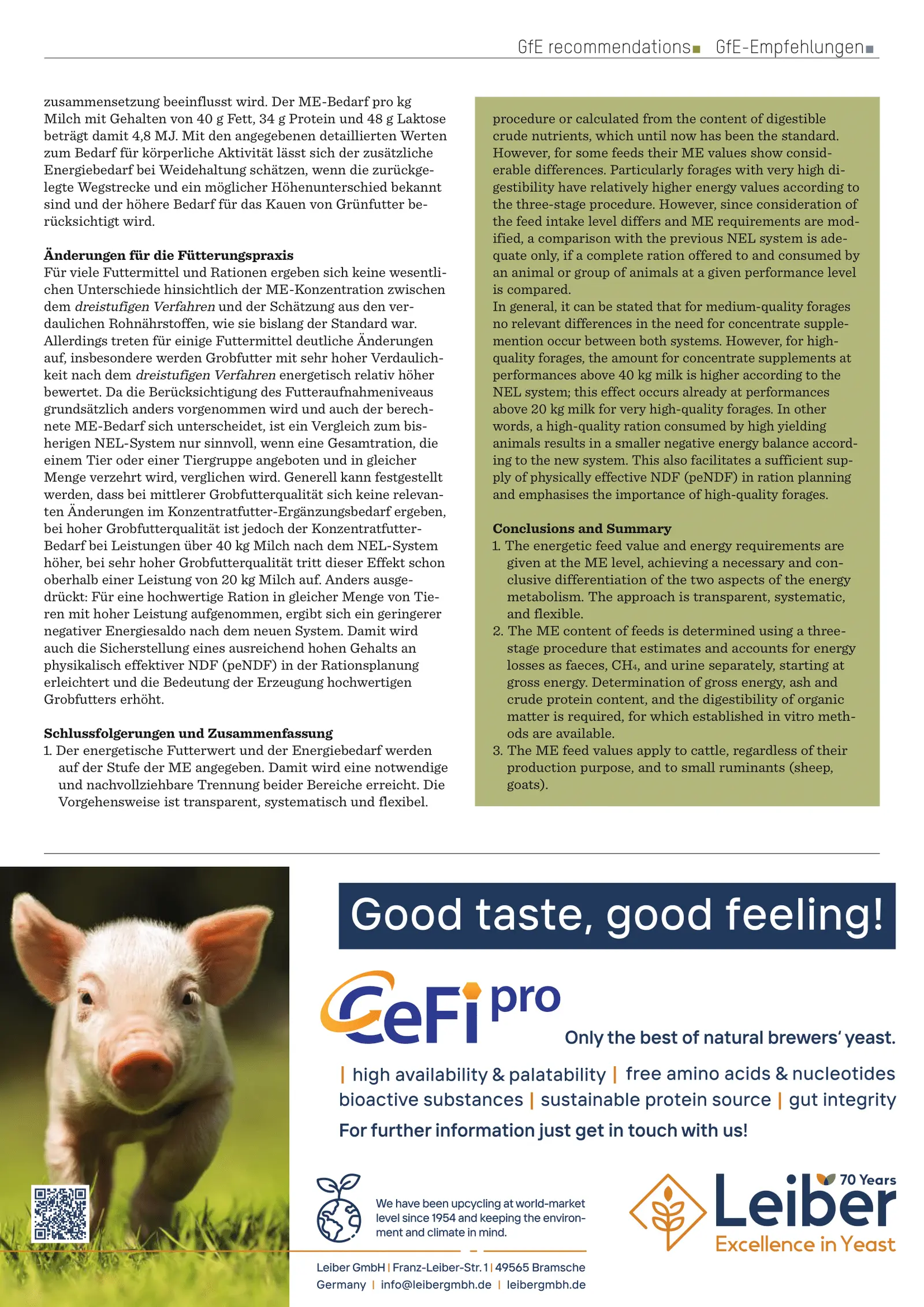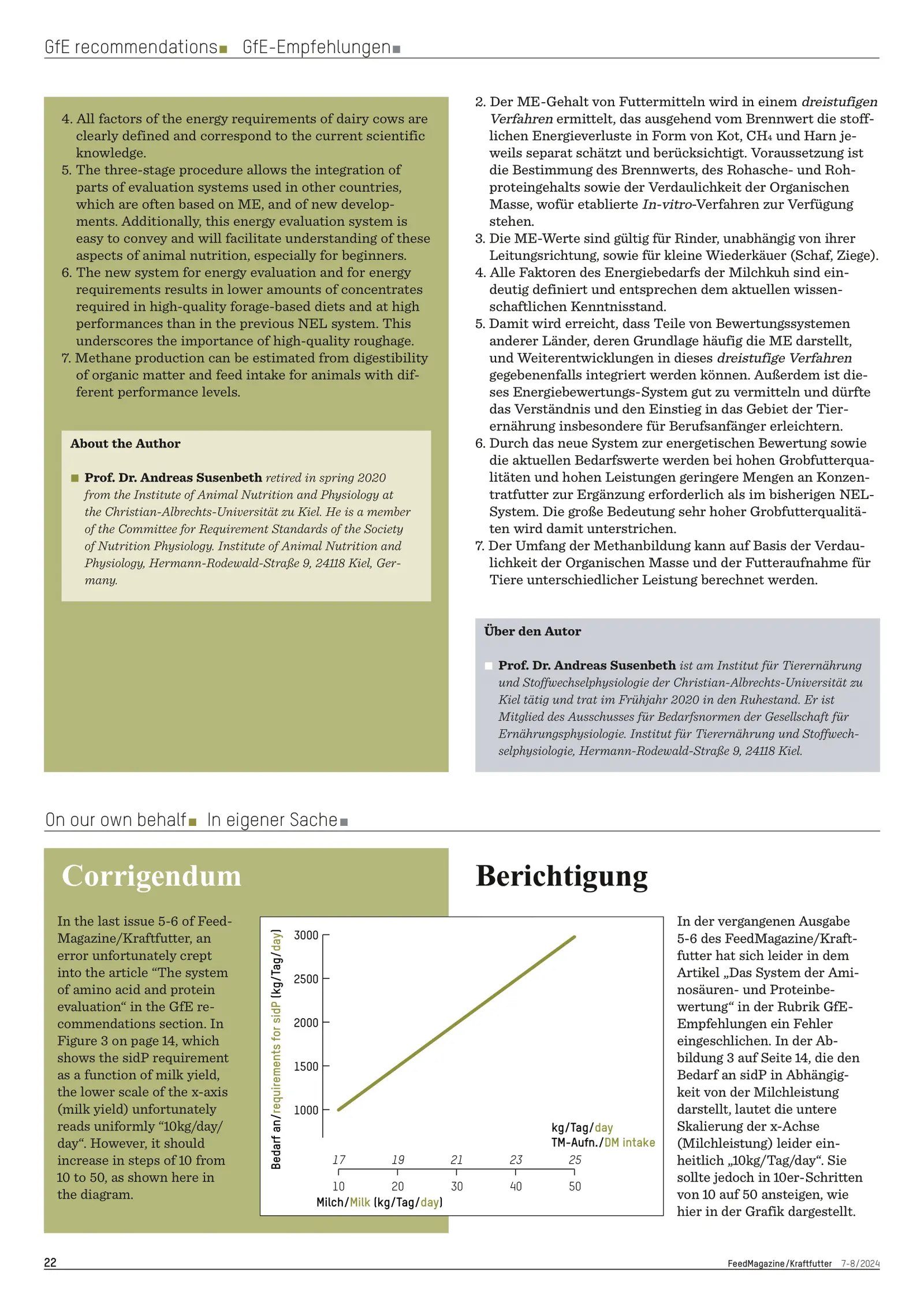Source: FeedMagazine/Kraftfutter 7-8/2024
Author: Prof. Dr. Andreas Susenbeth
This article outlines the updated approach to energetic feed evaluation and energy requirements in livestock nutrition, which is now based on Metabolisable Energy (ME). The core of the new system, introduced by the Society for Nutrition Physiology (GfE, 2023), is a three-stage procedure to determine the ME content of feed by estimating energy losses via faeces (FE), urine (UE), and methane emissions (CH₄-E).
The method relies primarily on organic matter digestibility (OMD) and crude protein (CP) content, offering a transparent and systematic framework that is adaptable to new scientific developments and internationally comparable.
A key change lies in the updated maintenance energy requirement of lactating cows, now set at 0.64 MJ ME/kg⁰·⁷⁵, and an adjusted ME utilization efficiency for milk production (kₗ) of 0.66, reflecting more precise physiological data. The ME requirement for 1 kg of milk (with 40 g fat, 34 g protein, 48 g lactose) is estimated at 4.8 MJ.
The feed intake level (FIL) significantly influences OMD, ED, and CH₄-E. While higher FIL reduces OMD and DE, it also lowers CH₄-E per kg of dry matter intake, resulting in relatively stable ME values up to FIL 3.5. These interactions highlight the importance of accurately estimating FIL, especially in high-performing animals.
The ME system also enhances nutrient use efficiency by accounting for nitrogen utiliaation in milk and body retention, avoiding underestimation of high-CP feeds. Energy losses are no longer estimated through regression coefficients as in the previous Net Energy for Lactation (NEL) system (GfE 2001), but rather through directly quantifiable variables, improving clarity and accuracy.
In practical feeding, the ME-based approach typically results in similar concentrate requirements for average forages but suggests lower concentrate needs for high-quality forage-based diets, particularly at high milk yields. This emphasizes the economic and nutritional value of high-quality roughage and improves physically effective NDF (peNDF) planning.
Finally, methane emissions can now be predicted from OMD and feed intake, allowing for more precise environmental impact assessments across varying performance levels.
The New Regulations for Dairy Cow Feeding in HYBRIMIN Futter X
The latest GfE recommendations are integrated into HYBRIMIN Futter X. Contact our support team for more information.
 Croatian
Croatian Danish
Danish French
French German
German Greek
Greek Polish
Polish Portuguese
Portuguese Romanian
Romanian Russian
Russian Spanish
Spanish Turkish
Turkish



